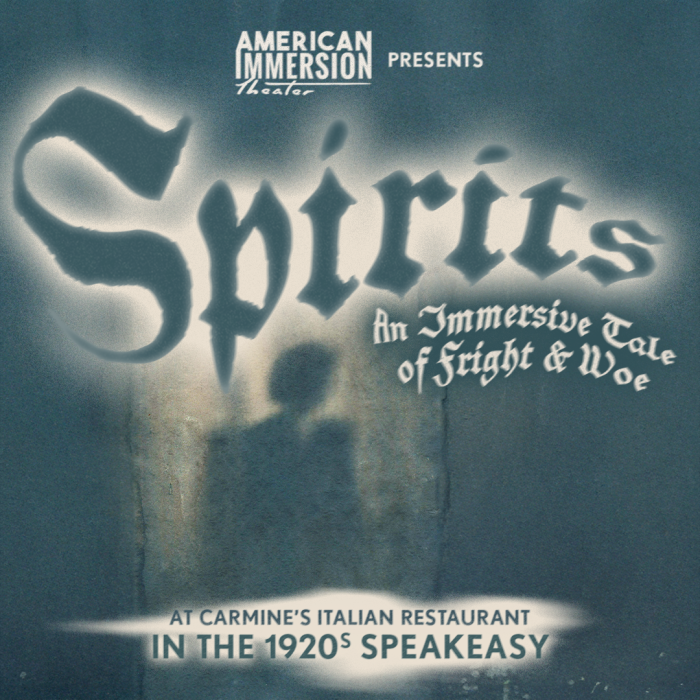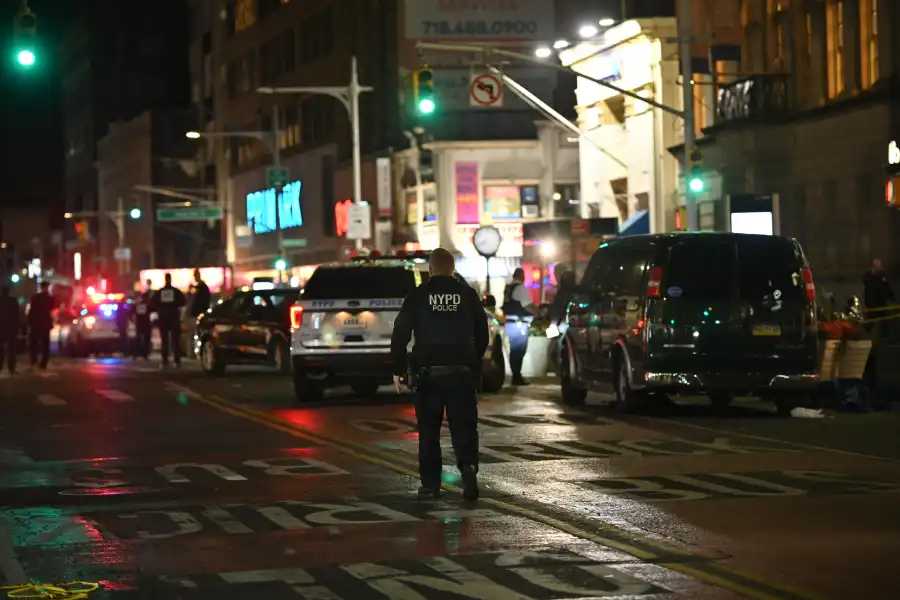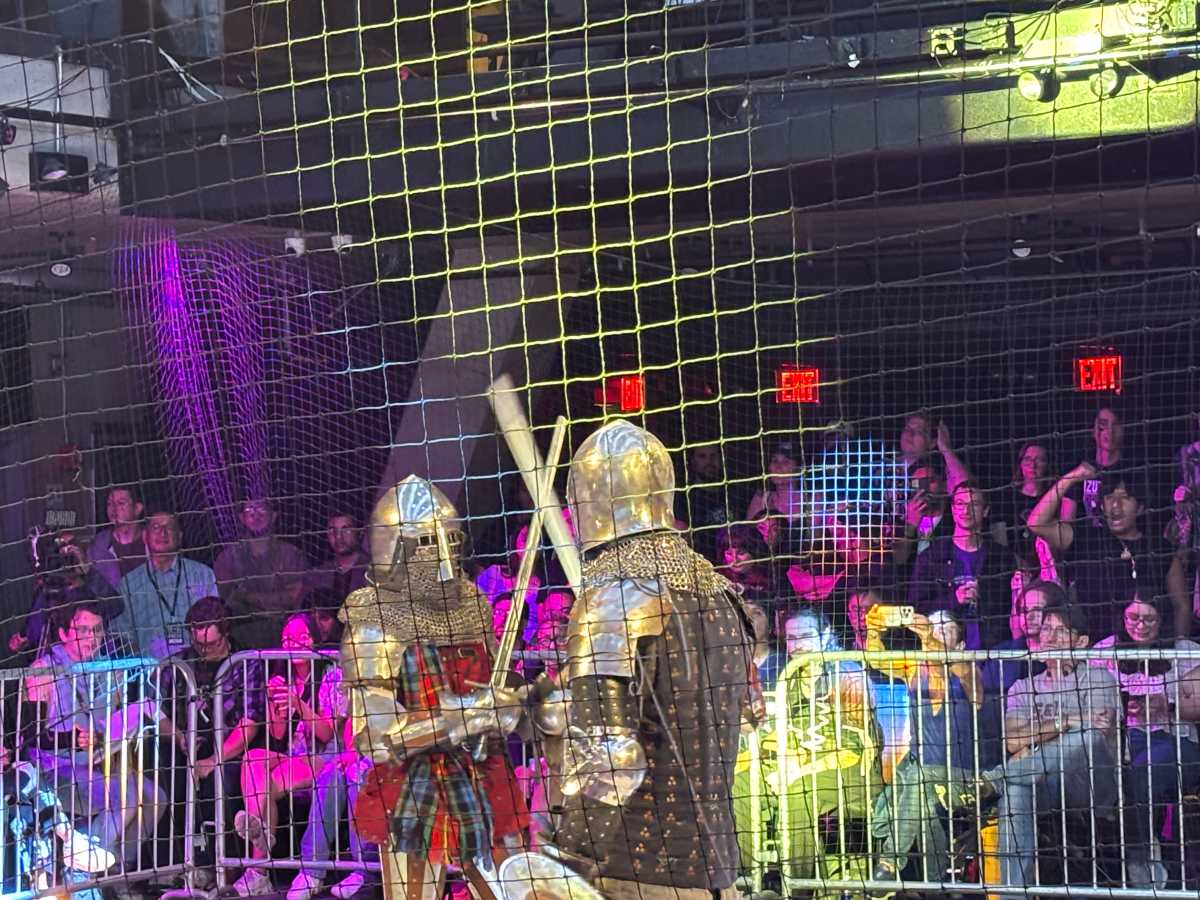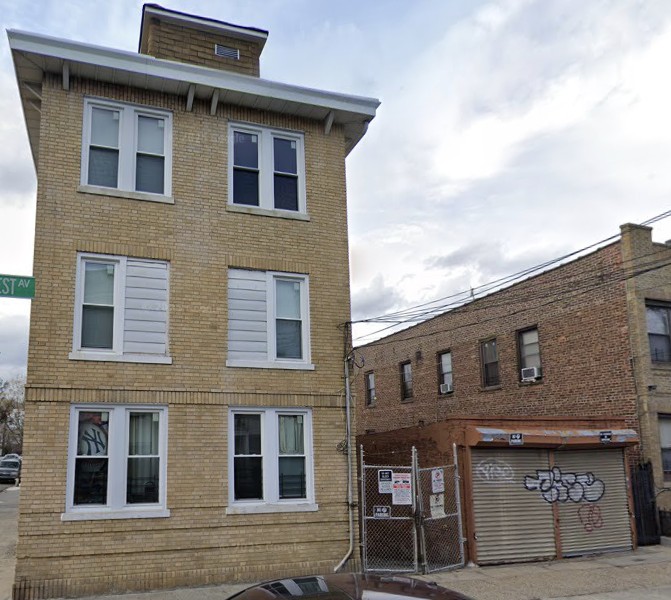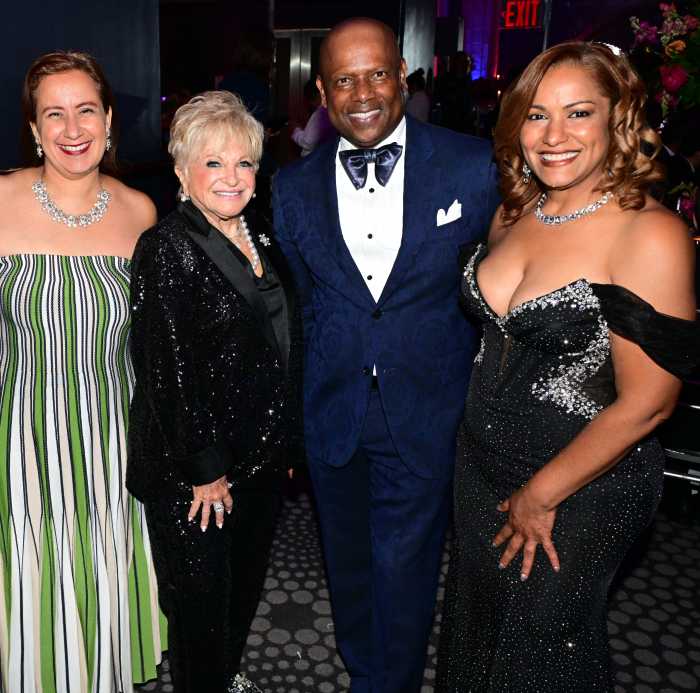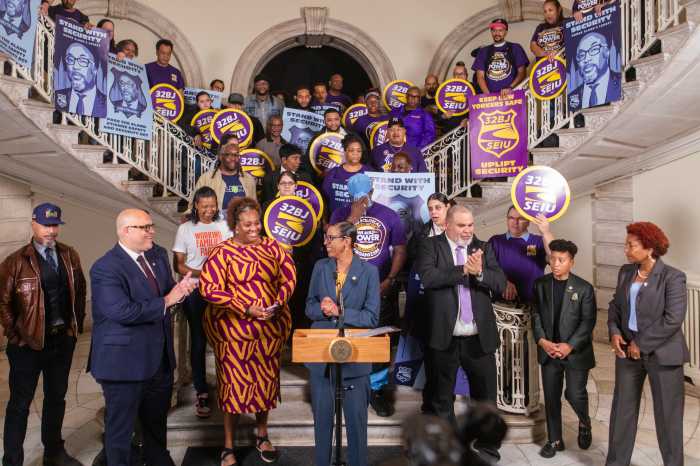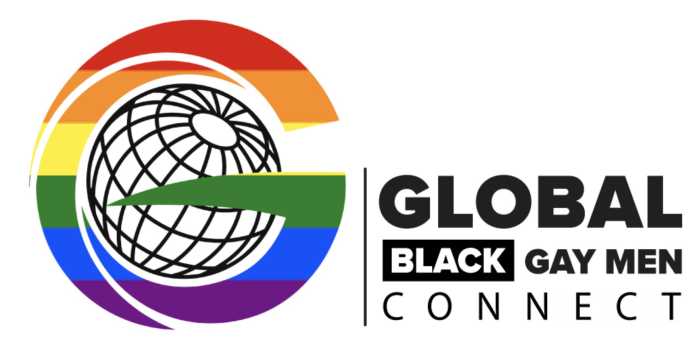By LindaAnn Loschiavo
Ninth St.’s west side story began 180 years ago when a neat thoroughfare — Ninth — was cut through Sir Peter Warren’s farm and mapped on the grid as part of a chic vicinity developing near Washington Sq. Unlike some blocks, Ninth wore its single digit proudly, not stupefied by the demands of honoring dead presidents, ex-governors or notable Knickerbockers.
In contrast, the neighboring byways could not decide to be numbers or names. Amity St. (Third St.), for example, opened in 1826; Allen St. (Fourth St.) opened in 1818; Fifth St. opened in 1821, becoming Washington Pl. in 1832; Sixth St. (later Waverly Pl.) opened in 1826; Old Greenwich Lane (which might have become a dog-legged Seventh St.) closed in 1828; and a two-block stretch of Eighth St. east of Sixth Ave. in 1828 was designated “Clinton Pl.” to honor DeWitt Clinton (1769-1828), an ex-governor of New York.
In 1824, when the westernmost section of Ninth St. was created, its tidy parallel placement between 10th St. and Clinton Pl. was quite unlike the crazy quilt of walkways west of Sixth Ave. where Fourth St. bisected 11th St., and Waverly met Waverly. This orderly right-angled regiment of city planning north of the park — known as “the American district” — attracted Mayflower descendents, wealthy Colonial families and high-profile politicians. This pearl of a block, strung between Fifth and Sixth Aves., has a history unknown to most. Here are highlights.
In 1833 Hooker’s map documented habitation on Ninth St.’s north side at Sixth Ave. Busy Jefferson Market, established that year, was the magnet, a wide triangular site created by W. 10th St., Greenwich Ln., and Sixth Ave.
By 1834 Henry Brevoort, Jr., planted a Georgian mansion at 24 Fifth Ave., which, until it was demolished in 1924, anchored the northwest corner of Ninth St. Scandal was the uninvited guest on Feb. 24, 1840, at Manhattan’s first masked ball when the Brevoorts entertained 500 costumed socialites. Matilda Barclay, daughter of the British consul, slipped out to elope and The New York Herald blabbed it on Page 1. The New York Times noted that the City Council banned future masquerade balls, imposing a $1,000 fine — New York City’s first party police.
By 1835, when a Greek-revival style trio (Nos. 60-62-64) were erected for politician William Beach Lawrence, each one constructed on a 25-ft.-by-94-ft. lot, a trend began. With few exceptions, the block’s southern side tended towards roomier plots than the northern side, thereby attracting wealthier residents. For example, a villa at 12 W. Ninth St. housed Colonel John Charles Fremont (1813-’90)when he was a presidential candidate in 1856. That villa was also home to Congressmember Henry Jarvis Raymond (1820-’69), first editor of Harper’s magazine and the founder and first editor of The New York Times. Briefly renting a floor from Congressmember Jarvis was Thurlow Weed (1797-1882), Evening Journal editor, power broker and ally of William H. Seward, President Lincoln’s secretary of state. Weed selected this address to be within a handshake of 24 W. Ninth, where his buddy General Winfield Scott was ensconced. The blue-blooded roll call of the even-numbered side also included the likes of Mayflower descendent Judge Henry Howland, church architect Charles Delano Hobart and patrician politician Chase Mellen, Jr.
By 1841, another scribe arrived. Poet William Cullen Bryant (1794-1878), editor of The Evening Post, moved to 59 W. Ninth perhaps because of the easy commute to “newspaper row” — Park Row near City Hall.
By 1848, as more rooftops lined W. Ninth, a literary soiree was gathering steam Saturday evenings at 20 W. Ninth, hosted by Anne Charlotte Lynch (1815-’91). Her salon was a drift net for big fish such as Bryant, Edgar Allen Poe, Horace Greeley, Margaret Fuller, Frederick Law Olmstead, Washington Irving, Herman Melville and Walt Whitman.
Other wordsmiths arrived, shuffling up and down W. Ninth like a pack of cards in pursuit of Lady Luck. In 1870, author Bret Harte got comfy at 16 W. Ninth on his sister’s sofa. In 1888, William Dean Howells breezed through 46 W. Ninth St. for three months. For a few months in 1918, Edna St. Vincent Millay and her sister Norma sniffled in unheated lodgings on W. Ninth when her first book, “Renascence,” was published. Between 1924-’28, when novelist Dawn Powell resided at 46 W. Ninth, her first novel, “Whither,” was penned and published. In 1928, after polishing a collection of verses, “Angels and Earthly Creatures,” 43-year-old poet Elinor Wylie (1885-1928) died suddenly at home at 36 W. Ninth. In 1929, at 26 W. Ninth, Dwight MacDonald (1906-’82) founded a literary magazine, The Miscellany ($2 to subscribe). In 1929, humorist S.J. Perelman (1904-’79), moved to 64 W. Ninth above Hudson Hand Laundry. During the 1950s, diarist Anais Nin did her drafts at 35 W. Ninth. And author-illustrator Maurice Sendak resided at 29 W. Ninth before earning fame and fortune for “Where the Wild Things Are” in 1964.
Some authors achieved acclaim, and then retreated to this writers’ block. Eleanor Franklin Egan, who purchased 13 W. Ninth in 1922, had been a war correspondent during the Russo-Japanese War and covered World War I from Mesopotamia. In 1918, worldwide fame followed the publication of her eight-volume work, “War in the Cradle of the World.” Journalist Herbert Asbury (1889-1963), who penned “Gangs of New York” in the 1920s, was out of print before moving to 38 W. Ninth, where he died. Similarly, Pulitzer Prize-winner Marianne Moore (1887-1972) saw her career as a poet peak before she settled in at 35 W. Ninth.
W. Ninth St.’s trailblazers, pioneers and headline-makers were an eclectic bunch:
* False Teeth: Dentist-inventor William E. Parsons, who owned 29 W. Ninth, was the first man in America to make artificial teeth, which made him wealthy.
* The YWCA: In 1855, publisher and philanthropist Henry Dexter (1812-1910) commissioned an outstanding mansion at 49 W. Ninth, an example of the Louis XIII French classic style. Concerned about “the spiritual destitution” of females living alone, Dexter donated his mansion to the Ladies Christian Union (later the YWCA), its first headquarters in New York City, in 1897.
* Mass transit: On May 25, 1878, artwork immortalizing the first run of a new Sixth Ave. Elevated subway train — applauded by W. Ninth St. residents — appeared in Frank Leslie’s Weekly Illustrated Newspaper.
* Landscape architecture: By 1888, young widow Mariana Griswold Van Rensselaer had moved back to her mother’s house, Nine W. Ninth, to work on a biography of the eminent architect Henry H. Richardson, published 1888. Since females were not accepted as experts who could write about architecture, Van Rensselaer became a pioneer who covered a brand-new field: landscape architecture.
* Colonial dames: In 1890, the founding of The Colonial Dames of New York State was held at 58 W. Ninth, home of Cornelia Jones Miller and her daughter Mrs. Wilmot Townsend Cox. Attending were society’s thoroughbreds such as next-door neighbor Grace Mitchell (1855-1936), whose mother, Mary Penfold Berrien Mitchell, had ancestors who came to America in 1669.
* Chinese Consulate: In 1891, 26 W. Ninth became the elegant quarters of the first Chinese Consulate — demolished 1922 — in New York City.
* Female transvestite: In 1901, 70-year-old Murray Hall astonished all when it was discovered that the cigar-smoking male was a female, Celia Lin Hall, who died of breast cancer. “Murray” had wed two women and adopted a daughter. John Bremer, proprietor of the Fifteenth Ward Hotel, at W. Ninth at Sixth Ave., exclaimed, “I saw him play poker with a party of the Jefferson Market clique and he played the game like a veteran!”
* El finale: On April 3, 1903, when the Manhattan Elevated Railroad was transferred to August Belmont’s syndicate at midnight, only a dozen men dining at 17 W. Ninth knew that a symbolic handover of that property was taking place. Host Julien Tappan Davies and his 12 guests were officials of the Manhattan system and of the Interborough Rapid Transit Company, the new lessee. W. Ninth was a silent witness when the domination of the underground railroad system over the city’s elevated lines (most of which would be demolished and disappear) began that night as the clock struck 12.
* Toppling Rockefeller: From 1901-’08, when Ida Tarbell (1857-1944) resided at 40 W. Ninth, McClure’s magazine serialized her corrosive articles on John D. Rockefeller and his Standard Oil Company, hastening the breakup of this Goliath. During 1909-’19, Tarbell lived at The Hotel Griffou [19 W. Ninth], and corresponded with Samuel Gompers, president of the American Federation of Labor. In its early years, The Villager, founded in 1933, frequently noted Tarbell’s doings and opinions; one front-page article reported Tarbell would not be celebrating her birthday that year.
* The Titanic: In 1912, General Nelson H. Henry [59 W. Ninth] was surveyor of the port. His wife organized a group of socialites to aid Titanic survivors. Mrs. Henry hired 31-year-old survivor Clear Annie Cameron — but the underpaid overworked maid decamped within months.
* N.Y.U.’s Government House: New York University students studied social conditions at a “Research Laboratory for Public Affairs” at the newly created Government House at 59 W. Ninth.
* Fighting fires with phones: Summoning firemen in 1920 meant dialing Rhinelander 1000 — a number frequently unanswered. Therefore, special equipment was installed in upscale buildings such as “Glass Box 15, 399” at The Hampshire, 50 W. Ninth. When the wife of Judge Augustus N. Hand and four neighbors tried to report an inferno at the home of Edith Forbes Morgan, at 52 W. Ninth, they could not reach Central. In a full-page New York Times ad they blamed the telephone company for the deaths of family members of J.P. Morgan. After W. Ninth St., residents sued Ma Bell and New York got public fire alarms on street corners.
* Scandal as marketing: In 1927, when a fleet of modern monoliths began crushing 19th-century brownstones into oblivion, the developers of the new 24 Fifth Ave. marketed their new hotel with arresting artwork. One ad featured a lavish illustration of “America’s first masked ball held in 1840,” depicting the scandalous lovers stealing away from the Brevoort mansion — which had just been razed — ironically trading on the very appeal and historical influence that had just been destroyed. Monthly rent for three rooms with a kitchenette was $325.
* Mae West trial: On Feb. 9, 1927, Broadway actress Mae West (1893-1980) was arrested, booked at Jefferson Market’s Night Court and jailed there. A trial on obscenity charges for West and others involved in a Broadway show followed in that courthouse, now a library.
* Arty parties: In the summer of 1938, art student Lee Krasner introduced Jackson Pollack to Herr Hofmann at the Hans Hofmann School, at 52 W. Ninth. Artists who called W. Ninth home included: Ashcan School artist William Glackens, illustrator Louis Glackens, muralist James Wall Finn, Marguerite and William Zorach, William de Leftwich Dodge, Charles Deming, Guy Pene du Bois, Moses Soyer and Tony Sarg, who made Macy’s first Thanksgiving floats.
* Bridge queen: When contract bridge queen Josephine Murray Culbertson (1899-1956) suffered a fatal stroke at home, 31 W. Ninth, she was famous as the first female contender at tournament level — but, unknown to most, she also had penned all of the bestsellers that were published under the byline of her egotistical ex-husband Ely Culbertson.
* Quiz show scandal: In 1958, “The $64,000 Question” contestant Charles van Doren made headlines when it was revealed that he had been fed answers. Tainted contestants, though lesser known, included four from W. Ninth and E. Ninth, including Elfrida von Nardroff of 33 W. Ninth, who escaped penalties and got to keep $200,000 in winnings.
* “Yes, Virginia There Is a Santa. . .”: Virginia O’Hanlon Douglas, whose childhood letter to St. Nick was immortalized in The New York Sun, taught school, married and raised a family at 26 W. Ninth until her retirement in 1959 from the classroom.
* Lionized: In 1960, a Monday talent contest at a gay bar owned by Burke McHugh — The Lion, at 62 W. Ninth — ignited the career of Barbra Streisand, Joan Rivers and, later on, Bette Midler.
* Trude Heller’s: Entertainers got closer to stardom at the nightspot Trude Heller’s at W. Ninth at Sixth Ave. Magic touched Rod McKuen, The Sandpipers, Manhattan Transfer, The Lovin’ Spoonful, Lance Loud and the Mumps, The Beastie Boys, Cyndi Lauper and others.
* Landmark legacy: In 1965, preservationist Margot Gayle summoned Brendan Gill, Henry Russell Hitchcock and others to her fireside at 44 W. Ninth, and formed Friends of Cast Iron and The Victorian Society.
* Block bonding: In 1971, the West 9th Street Block Association formed.
* Gay pride: Lawyer Steven J. Powsner (1955-’95) provided the financial backing for the first lavender line to be painted down Fifth Ave. for New York’s Annual Lesbian and Gay Pride March. From an unused school on W. 13th St., he muscled the Lesbian and Gay Community Services Center into being. Powsner died from AIDS at his home at 61 W. Ninth.
There’s more — but you’ll never hear it from the seat of a tour bus, since those were banished from W. Ninth in 1994 by our vigilant, hard-working block association.
Dawn Powell was one of the many authors who called W. Ninth St. home when it was one of the Village’s premier blocks for writers. Marianne Moore, the Pulitzer Prize-winning poet, was a resident as well.
thevillager.com












